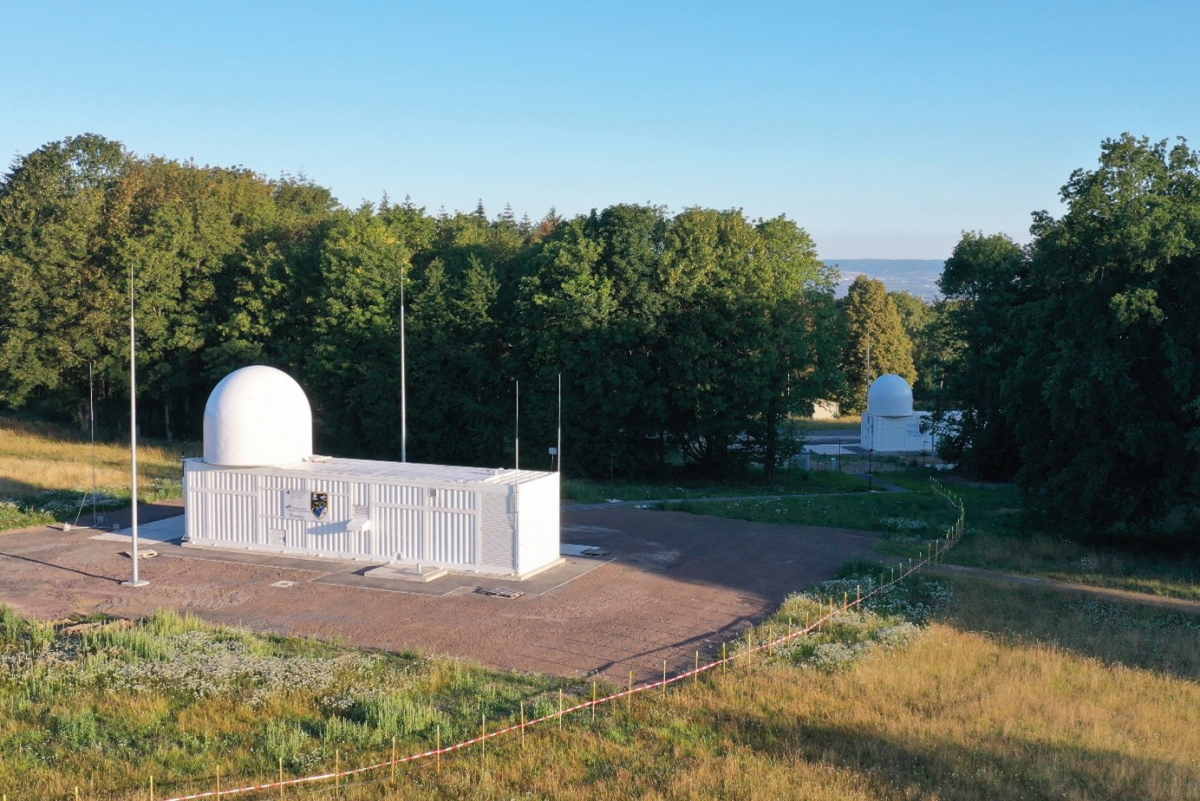Hensoldt has agreed to cooperate with the Fraunhofer Institute for High Frequency Physics and Radar Technology FHR with the aim of transforming the technology demonstrator GESTRA (German Experimental Space Surveillance and Tracking Radar) into a series-production ready.
GESTRA was developed by the Fraunhofer Institute on behalf of the German Space Agency
Hensoldt has agreed to cooperate with the Fraunhofer Institute for High Frequency Physics and Radar Technology FHR with the aim of transforming the technology demonstrator GESTRA (German Experimental Space Surveillance and Tracking Radar) into a series-production ready, operationally deployable system called Custodian. To this end, Hensoldt has acquired the necessary licenses from the Fraunhofer-Gesellschaft and concluded a cooperation agreement. The prototype was developed by the Fraunhofer Institute for High Frequency Physics and Radar Technology FHR on behalf of the German Space Agency at the German Aerospace Center (DLR).
The radar is currently in operation at the Schmidtenhöhe site training area near Koblenz
The radar is currently in operation at the Schmidtenhöhe site training area near Koblenz, where it is providing initial proof of performance. Another component of the DLR contract is, among other things, the commercialization of the technology by a suitable industrial partner. Following a call for tenders in an international competition, Fraunhofer has now awarded the rights for series production to the Ulm-based radar specialist Hensoldt Sensors GmbH. The two companies signed a corresponding license agreement on January 12, 2023. “This project is a beacon of German capability, founded on close cooperation between cutting-edge research and a high-tech company. It enables Germany to build an important national capability in the field of a key technology and at the same time make a valuable contribution to international partnerships,” said Peter Schlote, member of the Hensoldt Executive Committee and Head of the Radar Division.
The goal is to detect and track space debris, which increasingly poses a threat to space travel
“Based on the GESTRA technology, a global network of ground-based radar systems can be established to monitor near-Earth space. The goal is to detect and track space debris, which increasingly poses a threat to space travel and to the deployment and operation of satellites,” added Professor Peter Knott, institute director of Fraunhofer FHR. The Fraunhofer FHR and Hensoldt team is eagerly awaiting the announcement of potential customers' intentions to award contracts. Particular attention is being paid to the German Armed Forces: “It is known that the German Bundeswehr is aiming to procure independent sensor technology for space reconnaissance,” said Peter Schlote. “Knowing full well that the German Armed Forces have high requirements, the specialists of the Space Command would be our first choice as a partner.”
A committee to support the commercialization of the Custodian technology
“Bringing cutting-edge technology developed at Fraunhofer FHR into operational use with the Bundeswehr together with industrial partners is one of our inherent tasks,” said Professor Knott. “GESTRA plays a special role in this for us, as it is one of the largest development projects in our history in Wachtberg.” Hensoldt, Fraunhofer FHR and the German Space Agency have established a coordination committee to support the commercialization of the Custodian technology, which also serves as a platform for joint activities to build an international radar network. A cooperation agreement between Hensoldt and Fraunhofer FHR ensures that future developments of the technology can also be incorporated into the system as capability enhancements.

